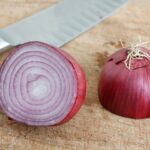Inner elbow pain can significantly impact daily activities, from simple tasks to sports performance. This pain often indicates a condition called golfer’s elbow, or medial epicondylitis. While commonly associated with golfers, this condition can affect anyone who repeatedly uses their wrists or fingers. This article explores the causes, symptoms, and treatment options for golfer’s elbow.
What is Golfer’s Elbow?
Golfer’s elbow is characterized by pain and tenderness on the inside of the elbow, where the tendons of your forearm muscles connect to the bony prominence called the medial epicondyle. This contrasts with tennis elbow, which affects the outer elbow. The pain can radiate down the forearm and into the wrist, making gripping and wrist movements difficult.
Common Symptoms of Golfer’s Elbow
Golfer’s elbow typically presents with a range of symptoms, including:
- Pain and tenderness focused on the inner elbow: This is the hallmark symptom, often worsening with specific movements like gripping, twisting, or flexing the wrist.
- Stiffness in the elbow joint: Difficulty bending or straightening the arm can occur.
- Weakness in the hands and wrists: Tasks requiring grip strength, such as opening jars or shaking hands, may become challenging.
- Numbness or tingling: These sensations may extend into the ring and little fingers.
Symptoms can develop gradually or appear suddenly after strenuous activity.
What Causes Inner Elbow Pain (Golfer’s Elbow)?
Golfer’s elbow results from damage to the muscles and tendons that control wrist and finger movements. Overuse and repetitive strain, particularly forceful wrist and finger motions, are the primary culprits. Several activities and occupations contribute to this condition:
- Repetitive sports movements: Improper technique in racket sports (especially backhand in tennis), throwing sports (baseball pitching), or weightlifting can strain the elbow tendons.
- Occupational hazards: Jobs involving repetitive forceful movements, such as construction, plumbing, and carpentry, increase the risk.
- Prolonged activities: Performing any activity requiring repetitive wrist or finger movements for extended periods (over an hour daily) can lead to golfer’s elbow.
Risk Factors for Developing Golfer’s Elbow
Certain factors increase the likelihood of developing golfer’s elbow:
- Age: Individuals over 40 are more susceptible due to age-related tendon degeneration.
- Repetitive activities: Engaging in activities requiring repetitive wrist and finger movements for more than two hours daily significantly increases risk.
- Obesity: Being overweight or obese puts extra stress on joints.
- Smoking: Smoking impairs blood flow and hinders tissue healing.
Preventing Golfer’s Elbow
Fortunately, several preventative measures can help reduce the risk of developing golfer’s elbow:
- Strengthening forearm muscles: Regular exercises using light weights or a tennis ball can improve muscle strength and resilience.
- Stretching before activities: Adequate warm-up and stretching prepare the muscles for activity and reduce strain.
- Using proper technique: Correct form in sports and other activities minimizes stress on the elbow tendons.
- Choosing appropriate equipment: Using correctly sized and weighted equipment in sports reduces the risk of injury.
- Lifting correctly: Maintaining a rigid wrist while lifting objects distributes the force evenly and reduces strain on the elbow.
- Resting when needed: Avoiding overuse and taking breaks at the first sign of pain are crucial for preventing further damage.
When to Seek Medical Attention
While mild cases may respond to rest and over-the-counter pain relievers, consult a doctor if:
- Pain persists despite home care.
- The elbow is hot, inflamed, or accompanied by a fever.
- You cannot bend your elbow.
- The elbow appears deformed.
- You suspect a fracture.
Early diagnosis and treatment are essential for managing golfer’s elbow effectively and preventing long-term complications. By understanding the causes, symptoms, and prevention strategies, you can take proactive steps to protect your elbow health.

